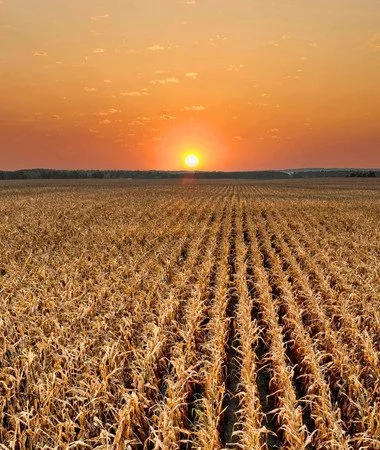Land Grading in Kansas: Is Fall the Best Time?
What You Should Know Before Starting
If you're planning a land grading project in Kansas, the fall season may seem like the perfect window. The crops are out, the temperatures are cooler, and the rush of summer construction has eased up. But in 2025, one factor stands out more than ever: rainfall.
So, is fall still a smart time to move dirt, or will the wetter-than-average year throw a wrench in your plans? Let’s dig into what this year’s weather means for your grading timeline—and why fall, in general, can still be an ideal season to get the job done right.
How Much Rain Has Wichita Seen in 2025?
If you’ve felt like your boots have stayed muddy longer than usual this year, you’re not imagining things. In the Wichita area, year-to-date rainfall totals have exceeded the norm by several inches:
One source reports 34.07 inches so far in 2025, compared to a historical average of 27.58 inches.
No matter the source, it’s clear that 2025 has been a wetter-than-average year in Kansas—and that matters for land grading.
What Does More Rain Mean for Land Grading?
Rainfall affects everything from soil condition to equipment access. When Kansas gets this much moisture, it creates a few key grading challenges:
Saturated Soils – Wet soil doesn't compact well, which can lead to uneven grading or long-term erosion issues.
Delayed Access – Soft ground can prevent heavy equipment from reaching the site without causing ruts or damage.
Erosion Risks – Improperly timed grading on wet ground may lead to runoff issues during the next storm.
But that doesn’t mean grading has to wait until next spring. In fact, fall can still be a smart and strategic time to move forward—if the conditions are right.
Why Fall Is Still a Prime Season for Land Grading
Even with higher rain totals in 2025, fall has built-in advantages:
Cooler Temps Mean Stable Ground
Drying conditions improve as humidity drops, allowing soil to recover more quickly after rain.Less Agricultural Traffic
After harvest, you’re less likely to deal with compaction from combines or field access conflicts.Better Scheduling
Many construction teams have more availability after the summer push, leading to faster turnaround times.Preparation for Spring Projects
Getting grading done in the fall sets you up for smoother, faster construction in the spring.
How to Know If It’s the Right Time to Grade Your Land
Here’s a simple checklist to determine if fall 2025 is the right time to start:
Have you had at least 3–5 dry days in a row?
Is the ground firm underfoot with minimal standing water?
Has your project site been evaluated for proper drainage and erosion control?
Are you planning for spring planting, building, or fencing?
If you answered yes to most of these questions, your site may be ready now—before winter sets in.
Partner With a Crew Who Knows Kansas Dirt
At Larry Cook Construction, we’ve been working the Kansas terrain for decades. We understand how to navigate wet conditions, seasonal timing, and local soil types—and we don’t take shortcuts.
If you're considering land grading this fall, don’t wait until the calendar turns. We can assess your site, check for red flags, and get your project done right the first time.
Call today for a site assessment or quote.
Final Thoughts
While 2025 has brought higher-than-average rainfall to Kansas, fall land grading is still a go—with the right timing and expert execution. Whether you're prepping for new construction, reworking pasture land, or setting up drainage systems, now’s the time to evaluate your options.
Let’s make your dirt work... work.


